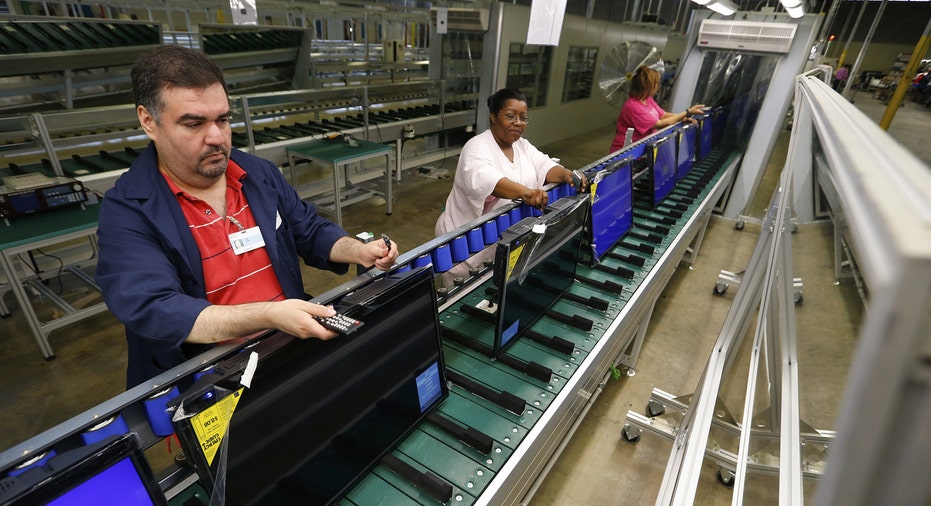U.S. Manufacturing Hits Lowest Level Since May 2013

U.S. manufacturing activity slowed in October for a fourth straight month, but a rise in new orders offered hope for a sector buffeted by a strong dollar and relentless spending cuts by energy companies.
Other data on Monday showed construction spending rose in September, indicating the economy remained on firmer ground despite some cooling in consumer spending and persistent weakness in manufacturing.
The Institute for Supply Management said its national manufacturing index slipped to 50.1 this month from a reading of 50.2 in September. A reading above 50 indicates expansion in the manufacturing sector.
New orders rose to 52.9 from 50.1 in September. However, the employment index fell to 47.6, the lowest reading since August 2009. It was the first time it had dropped below 50 since April.
U.S. stocks moved higher after the data, while prices of U.S. government debt fell. The dollar dipped against a basket of currencies.
Manufacturing, which accounts for 12 percent of the economy, has also been slammed by business efforts to reduce an inventory overhang and slowing demand overseas.
The dollar has gained 16.8 percent against the currencies of the United States' main trading partners since June 2014, squeezing the profits of multinational companies like Procter & Gamble Co. <PG.N> and 3M Co. <MMM.N>.
At the same time, a plunge in oil prices has pressured revenues for oil field companies like Schlumberger (NYSE:SLB) and diversified manufacturer Caterpillar Inc (NYSE:CAT).
CONSTRUCTION SPENDING UP
In a separate report, the Commerce Department said construction spending advanced 0.6 percent to $1.09trillion, the highest level since March 2008, after an unrevised 0.7 percent increase in August.
Construction spending has increased every month this year, and the latest gain suggested a modest upward revision to the third-quarter GDP growth estimate.
Economists polled by Reuters had forecast constructions pending rising 0.5 percent in September. Construction outlays were up 14.1 percent compared to September of last year.
September's increase is slightly above the gain the government had estimated in its advance third-quarter gross domestic product estimate published last week.
The government reported the economy grew at a 1.5 percent annual pace in the third quarter, hurt by business efforts to reduce an inventory glut and continued spending cuts by energy firms. A strong dollar also hurt the economy.
Data last week suggested consumer spending lost momentum at the end of the third quarter, with consumption in September posting its smallest increase in eight months. A report on Monday was expected to show a further slowdown in factory activity in October. In September, construction spending was boosted by a 0.6 percent rise in private construction spending, which hit its highest level since January 2008.
Spending on private residential construction jumped 1.9 percent in September, also reaching the highest level since January 2008, reflecting gains in home building and renovations. Investment on private non-residential construction projects, however, fell 0.7 percent.
Public construction outlays gained 0.7 percent. Spending on state and local government projects, which is the largest portion of the public sector segment, increased 0.9 percent. Federal government outlays declined 1.0 percent.
(Reporting by Lucia Mutikani; Editing by Paul Simao)